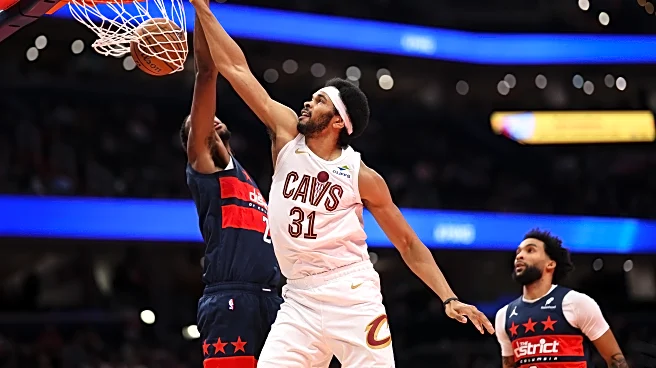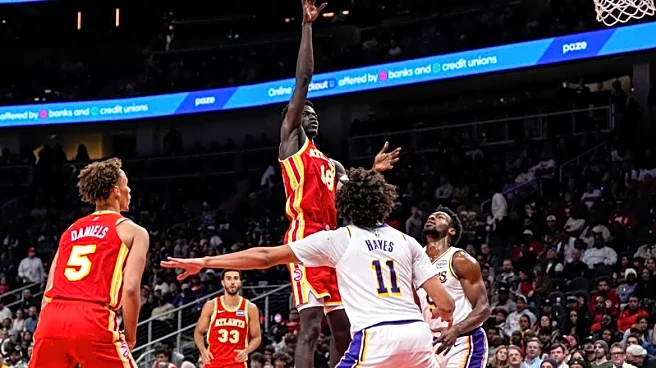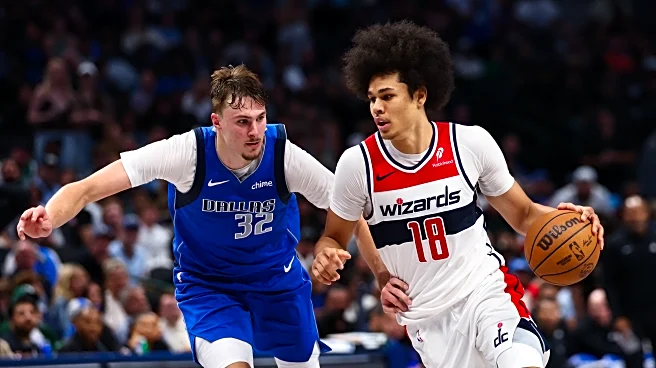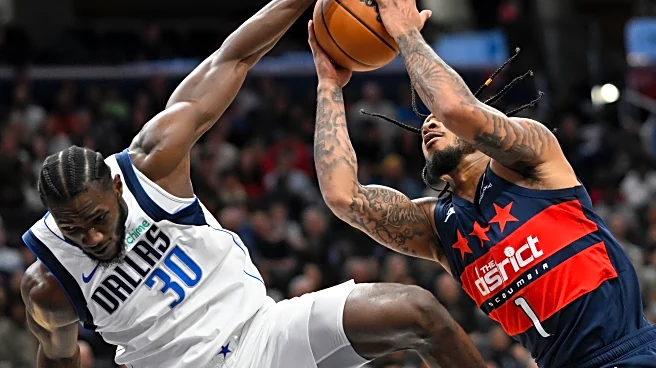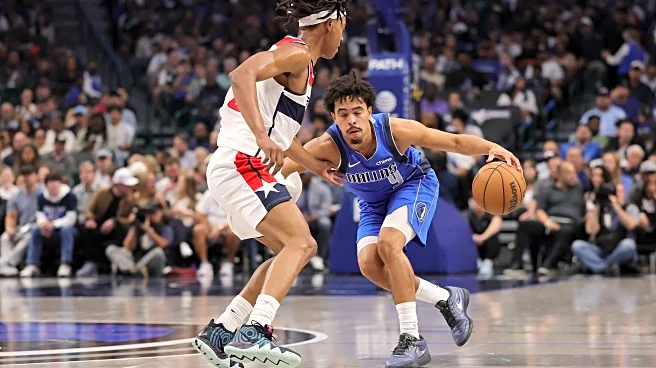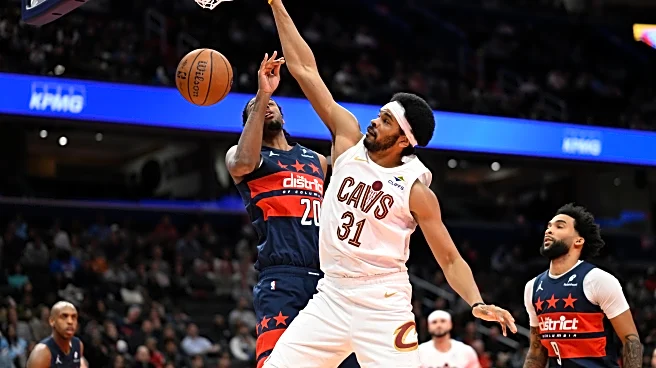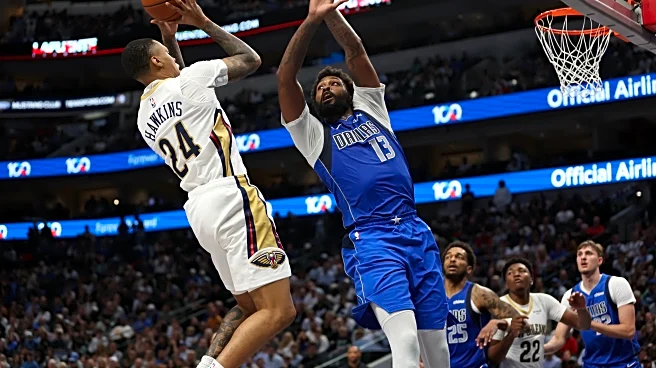
The Washington Wizards couldn’t complete a season sweep of the Dallas Mavericks, but last night’s loss was back to the competitive, feisty, entertaining brand of basketball they played for the first couple
weeks of the 2025-26 season.
When the teams played in the second game of the season, Washington departed Dallas with a win in no small part because the Mavericks lacked competent guard play. Head coach Jason Kidd was trying to use Cooper Flagg, a 6-9 rookie forward who doesn’t turn 19 for another six weeks, as the lead ball handler. While Flagg is a major talent, turns out that wasn’t a winning strategy.
Sitting at the bottom of the Western Conference standings, Kidd and the Mavericks are trying the novel idea of playing guards at guard. Last night, they started Max Christie — the only guy on the team making threes consistently — and D’Angelo Russell, who…well, I don’t want say he looked washed, but he looked slow and ground-bound and thoroughly ineffective. Even against a Wizards defense that’s been incapable of defending perimeter players this season.
Washington sprinted to an early 16-9 lead, which was followed by a 19-0 run by the Mavericks. The Dallas lead got as high as 14 before the Wizards mounted a second-half rally and went up by as much eight in the fourth quarter. The offense stalled and the defense staggered, and Dallas staged a comeback of their own to win by six.
Back to that Washington perimeter defense for a moment — don’t worry, the porous perimeter defense continued. In this case, it was Naji Marshall, who torched the Wizards for 30 points (on 14 field goal attempts), 8 rebounds, 2 assists, and 3 steals.
After starting the season as an effective defensive rebounding team, the Wizards seem to be backsliding towards last season’s woeful board work. Dallas got their third win of the season despite hitting just 6-24 from three-point range by grabbing 16 offensive boards (33.3% offensive rebounding percentage) and winning the turnover battle 13-18.
Washington’s primary turnover culprit was Bub Carrington with five. CJ McCollum and Tre Johnson had three each. Kyshawn George, Alex Sarr and Marvin Bagley III each committed two.
Thoughts & Observations
- Sarr is noticeable improved from his rookie year — especially his motor and defensive awareness and presence. He’s converting at around 77% on at-rim attempts, but I admit I’m not completely convinced he has good touch around the basket. Bright side: he’s using that improved motor to chase down his misses and generate scores anyway.
- George fouled out for the second time in the nine games he’s played this season. He’s committed five fouls five times, and four fouls once. That’s at least four fouls in eight of his nine games, with at least five in 7-of-9. He’s gotta learn to play without fouling so much.
- I think Tre Johnson will be good in a few years, but he’s nowhere close to being ready to start NBA games.
- One happy stat: the Wizards defensive rating (points allowed per possession x 100) was below 100 with four players on the floor last night: Justin Champagnie, Kyshawn George, Alex Sarr, and Tre Johnson.
- McCollum torched the Mavericks for 23 points in the first half. He made just 1-7 for 2 points in the second.
- Cam Whitmore got 29 minutes (his Wizards high) and scored 19 points (also his Wizards high). He seemed to be communicating on defense, which was good to see. I’d like to see more non-scoring dimension to his game, but an efficient 19 points in 29 minutes is good.
Four Factors
Below are the four factors that decide wins and losses in basketball — shooting (efg), rebounding (offensive rebounds), ball handling (turnovers), fouling (free throws made).
The four factors are measured by:
- eFG% (effective field goal percentage, which accounts for the three-point shot)
- OREB% (offensive rebound percentage)
- TOV% (turnover percentage — turnovers divided by possessions)
- FTM/FGA (free throws made divided by field goal attempts)
In the table below are the four factors using the percentages and rates traditionally presented.
Stats & Metrics
PPA is my overall production metric, which credits players for things they do that help a team win (scoring, rebounding, playmaking, defending) and dings them for things that hurt (missed shots, turnovers, bad defense, fouls).
PPA is a per possession metric designed for larger data sets. In small sample sizes, the numbers can get weird. In PPA, 100 is average, higher is better and replacement level is 45. For a single game, replacement level isn’t much use, and I reiterate the caution about small samples sometimes producing weird results.
POSS is the number of possessions each player was on the floor in this game.
ORTG = offensive rating, which is points produced per individual possessions x 100. League average so far this season is 115.1. Points produced is not the same as points scored. It includes the value of assists and offensive rebounds, as well as sharing credit when receiving an assist.
USG = offensive usage rate. Average is 20%.
ORTG and USG are versions of stats created by former Wizards assistant coach Dean Oliver and modified by me. ORTG is an efficiency measure that accounts for the value of shooting, offensive rebounds, assists and turnovers. USG includes shooting from the floor and free throw line, offensive rebounds, assists and turnovers.
+PTS = “Plus Points” is a measure of the points gained or lost by each player based on their efficiency in this game compared to league average efficiency on the same number of possessions. A player with an offensive rating (points produced per possession x 100) of 100 who uses 20 possessions would produce 20 points. If the league average efficiency is 114, the league — on average — would produced 22.8 points in the same 20 possessions. So, the player in this hypothetical would have a +PTS score of -2.8.
Players are sorted by total production in the game.




